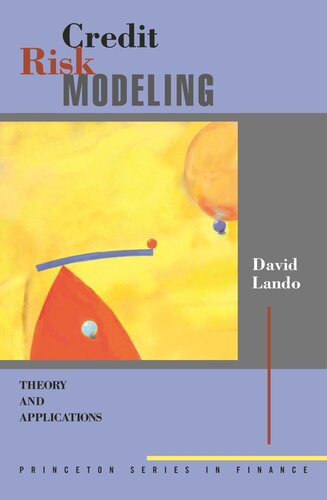

Most ebook files are in PDF format, so you can easily read them using various software such as Foxit Reader or directly on the Google Chrome browser.
Some ebook files are released by publishers in other formats such as .awz, .mobi, .epub, .fb2, etc. You may need to install specific software to read these formats on mobile/PC, such as Calibre.
Please read the tutorial at this link: https://ebookbell.com/faq
We offer FREE conversion to the popular formats you request; however, this may take some time. Therefore, right after payment, please email us, and we will try to provide the service as quickly as possible.
For some exceptional file formats or broken links (if any), please refrain from opening any disputes. Instead, email us first, and we will try to assist within a maximum of 6 hours.
EbookBell Team

4.1
60 reviewsCredit risk is today one of the most intensely studied topics in quantitative finance. This book provides an introduction and overview for readers who seek an up-to-date reference to the central problems of the field and to the tools currently used to analyze them. The book is aimed at researchers and students in finance, at quantitative analysts in banks and other financial institutions, and at regulators interested in the modeling aspects of credit risk.
David Lando considers the two broad approaches to credit risk analysis: that based on classical option pricing models on the one hand, and on a direct modeling of the default probability of issuers on the other. He offers insights that can be drawn from each approach and demonstrates that the distinction between the two approaches is not at all clear-cut. The book strikes a fruitful balance between quickly presenting the basic ideas of the models and offering enough detail so readers can derive and implement the models themselves. The discussion of the models and their limitations and five technical appendixes help readers expand and generalize the models themselves or to understand existing generalizations. The book emphasizes models for pricing as well as statistical techniques for estimating their parameters. Applications include rating-based modeling, modeling of dependent defaults, swap- and corporate-yield curve dynamics, credit default swaps, and collateralized debt obligations.